General Insurance Blogs, Articles & Updates by - Magma HDI
Have us call you
- RENEW YOUR POLICY
- BUY NEW POLICY
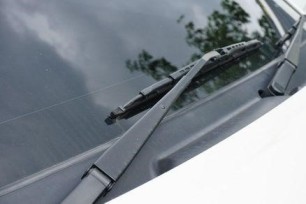
Here's why windshield wipers are important
What are the primary things that come to your mind when you think of car maintenance? Oil changes and engine inspections. But what most of us forget are windshield wipers. These underrated blades are just as crucial as the engine of your vehicle. We do not need them often, and wipers don't seem to do much in our daily driving. So, it's assumed that they don't require much attention. However, during unexpected changes in the weather, wipers are an integral part of your vehicle maintenance to ensure safe driving.
Why are car wipers important?
The first pair of wipers for cars were made back in 1903, and since then, their use has advanced significantly. These key technologies improved car safety and allowed drivers to travel in adverse weather conditions. Latest windshield wipers come with a variety of enhanced functions and settings. Modern devices have been built to be simple to use, effective, and maintain clarity while driving.
Importance of maintaining wipers:
It is common knowledge that clear vision is the most critical driving component. Appropriately functioning wipers are a way to ensure complete visibility for the driver.
If you don't repair your windshield wipers on time, the blade may tear and break away from the wiper. As a result, the bare metal or plastic wiper arm can scratch the windscreen as it scrapes over it. Damaged windshield wipers can also produce scratches on your glass, resulting in higher repair costs. It's far easier to examine and change your wipers regularly than paying for windshield repairs.
Windshield wipers' care varies from place to place, depending on the region you live in and their frequent use in the vehicle. However, the wiper blades are supposed to be replaced every six months.
How to clean / replace your wiper blades:
Regular cleaning of the wiper blades should be done to increase their efficiency. You may begin by wiping the wipers down with clean towels and mild detergent. Then clean the edge of the blade with a towel soaked in alcohol to get rid of any leftover grime and dirt.
Replacing wiper blades regularly is a low-cost investment in your driving security. To begin, measure the durability of your wiper blades or consult your car's owner's handbook for the correct information. After that, you may buy and install fresh blades. Next, lift the arm of the windshield, press on the little button under the wiper, and slide the blade off downhill to remove the old blades. To swap the blade, tighten the new blade onto the arm. When done, a clicking sound should be heard.
Safe driving requires total visibility of the front view while you are in the driving seat. When rain or snowfall strikes, be sure you're ready with a clean windscreen. Therefore, ensure to inspect your wiper blades regularly and replace them when required. Also, add washer fluid and make sure to maintain the right combination. Maintaining your wipers and washer system is a simple and inexpensive method to keep you and your family safe while driving. Also, do not forget to invest in a reliable motor insurance India policy to keep your vehicle insured and obtain the benefits that it has to offer.
Get the best motor insurance India policies HERE .
Disclaimer: The information provided above is for illustrative purposes only. To get more details, please refer to policy wordings and prospectus before purchasing a policy.
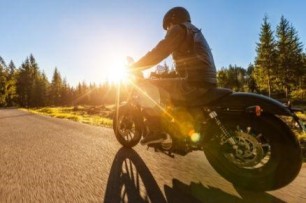
These important tips can make riding in the bright sunlight easy for new riders
We often hear people talk about the beautiful roads and the impeccable views that are part of road trips. Especially during winters, we listen to riders talk about taking their bikes out to enjoy the sun's warmth above them. And, summer brings exciting travel plans to exotic destinations.
However, before setting for a bike ride on a sunny day and making your trip experiential and worthwhile, consider the following tips.
1. Sunglasses or tinted visors:
If the sun is glaring right at you from the opposite direction, it becomes challenging for the riders to see the road ahead and the fellow drivers on the road. Getting a pair of sunglasses ensures that your vision is not tempered and you have a clear view of everything on the road.
If you are someone who does not fancy wearing a sunglass, opting for a tinted visor is a great alternative. Tinted visors can double up as sunglasses and a face shield to prevent your skin from burning directly under the sun.
2. Wear appropriate gear:
If you are traversing through long stretches of roads, it is best to wear a bright-coloured vest. This will ensure that the person coming from the opposite side notices you, thus preventing a collision.
Another thing to note is that driving through harsh conditions will require you to wear anti-abrasion and impact-resistant gears. Opt for gears with mesh panelling to help you remain cool but protected against extreme heat.
3. Carry water:
Driving under the sun can cause dehydration and exhaustion. Take pit stops in the middle to drink water and rest. It is extremely important to maintain your body’s water levels. As you start sweating, your body will lose water. This can lead to heat-related illnesses. Do not forget to carry electrolytes for added benefits.
4. Vent the helmet:
Venting the helmet can help in cooling down immensely in hot weather. While riding, keep the vents open to dissipate the heat and allow air to sleek in for freshness.
5. Wear gloves:
The gloves will act as a barrier between your palm and the accelerator to avoid sweating and reduce the risk of accidents. They even protect your skin from direct sunlight, preventing the palm skin's tanning.
6. Apply sunscreen:
Ensure to lather your skin with enough sunscreen to protect the exposed body parts. Use sweat and water-resistant ones with at least SPF 30 rating.
7. The 12-3 rule:
Unless absolutely necessary, skip the riding in the peak hours between 12:00 noon and 3:00 pm. As this is the hottest period of the day, it is best to take a break. You could use this time to grab your lunch and restock your energy and water supplies.
These are a few tips that you can follow to make your drives easy and less tiring. However, if you feel dizzy or lightheaded, your body could be overheating. This could lead to heat strokes and can be fatal. Under such circumstances, it is best to pull over and rest under the shade or in an airconditioned restaurant or supermarket.
Long road trips can be exhausting for you and your bike. Take a day off to relax and drop your bike off at the nearest service station for a quick check-up before you set out on your next trip. Add value to the whole experience by investing in bike insurance to sit back and not worry about the expenses you might face later.
Click HERE to know more about bike insurance.
Disclaimer: The information provided above is for illustrative purposes only. To get more details, please refer to policy wordings and prospectus before purchasing a policy.

Try these six remedies to treat food poisoning at home and get instant relief
Trying various foods is always tempting but can also cause food poisoning or other stomach related problems. We experiment with new foods and cuisines but often overlook the consequences.
Food poisoning is mainly caused by bacteria, viruses, and parasites in food. Symptoms include vomiting, diarrhoea, nausea, abdominal discomfort, fever, etc. Food poisoning is accompanied by a stomach infection that makes your body lose more water than usual. Drinking plenty of fluids and avoiding solid foods is the first line of defence. As innocuous as it may appear, food poisoning can become life-threatening if not handled promptly.
However, you can treat minor cases of food poisoning at home with a few common everyday items. Read more to know about these magic ingredients from your kitchen that will soothe your food poisoning.
1. Garlic cloves:
While the idea of gulping raw garlic may be unsettling, garlic is famous for its antibacterial, antiviral, and antimicrobial properties. These characteristics make it an excellent home remedy to combat food poisoning. Take a couple of cloves of garlic and chew on them. Afterwards, drink some warm water.
2. Ginger:
Ginger helps decrease the symptoms of food poisoning. Its anti-inflammatory properties soothe your stomach lining. Boil a cup of water with one scoop of grated ginger in it. Alternatively, you can directly eat ginger slices.
3. Cumin:
Cumin seeds, also known as jeera, provide immediate relief. Boiling one teaspoon of cumin seeds in water can cleanse your system. You can also combine it with one teaspoon of coriander juice and a pinch of salt. It stimulates the activity of digestive enzymes in your body, thereby improving digestion.
4. Lemon:
Lemons have anti-inflammatory, antiviral, and antibacterial qualities that fight the microorganisms causing food poisoning. Drink warm lemon juice and stay hydrated to reduce the pressure on your stomach.
5. Curd with fenugreek:
Curd contains beneficial bacteria that aid in the fight against other harmful bacteria in the body. Fenugreek seeds also have a high amount of soluble fibre, which absorb water and act as a lubricant, aiding in treating gastrointestinal discomfort. Consume one teaspoon of curd with one teaspoon of fenugreek seeds to ease your stomach.
6. Holy basil:
The best herb against food poisoning is holy basil or tulsi. This plant has many antibacterial characteristics that can help lessen the impact of food-borne diseases. For immediate relief from the symptoms of food poisoning, chew on a few fresh leaves that can be easily spotted in all Indian homes.
These are some tried and tested home cures that have proven to be effective through time. While some may notice a significant improvement in symptoms, others may not. In such circumstances, you must act quickly and seek medical assistance at the nearest health care facility.
It's always wise to plan for such unforeseen concerns by investing in health insurance. While you're taking these steps to cure food poisoning, your health insurance covers your medical bills in case of an emergency. Get one immediately from online health insurance companies and be secured by comprehensive coverage that can act as a strong safety net.
Click HERE to learn more about health insurance policy for you.
Disclaimer: The information provided above is for illustrative purposes only. To get more details, please refer to policy wordings and prospectus before purchasing a policy.
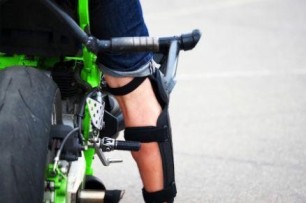
These are a few mistakes done by riders with short height
There is no denying that riding bikes is a dangerous sport. It requires a lot of focus, physical work, mental stability, and risk-taking ability. It is an expensive hobby or passion to take up. Professional riding bikes are costly, and the riding gears demand a heavy investment.
While no sport is supposed to discriminate between different attributes of the sportspersons, the short-heightened riders need to be a little careful while riding their bikes. It can be a bit difficult for them to control their bikes due to their short height. Short riders can make a few mistakes out of no will of their own but due to their physical features.
How would you identify the errors these riders are making? This blog will discuss those discrepancies caused by the riders.
1. Not paying attention to the gear:
It is alright if you do not want to purchase the most expensive biking gear available. But skipping out on paying attention to the gear, quality gloves, and boots could negatively affect your riding. Boots keep your feet in position, and the heels give you a certain height which would help you gain control of the handlebar and the bike in a better manner. Premium quality gloves would help you handle the control of your bike and avoid any slips of the gears, throttle, steering, and clutch, even on tricky and rocky terrains.
The gloves and the boots solve your height issues and give you better control of the bike. They help you avoid any accidents or compromise your safety. You would be more efficient and capable of managing the bike better and have a comfortable journey.
2. Not working on your driving skills:
Several riders with short height pay way too much attention to the hardware of the bikes. While it is essential to learn and have a detailed understanding of the features and the hardware that goes into building the bike and making it function properly, it is equally important to work on your driving skills.
Honing your skills would help you achieve better control in stressful situations and increase your response skills which would come in handy when you have a sudden decision to make while riding. You can focus on specific skills that would help you maximize your bike's output, not put your safety at risk and gain better access and control of the motorcycle, thus nullifying the issues that might come with having a short height.
3. Position your bike correctly:
Learn how to change your motorcycle positioning. If you have plans to lower it, think again. You will reduce the ground clearance, which will affect your ability to lean your bike correctly. This might also increase your chances of sudden falls and possibility of disbalance putting your safety and bike performance at risk.
Some other things you can take care of are leaning left while stopping, practicing with a good bike on which you can put your feet flat on the ground, etc.
That’s a wrap on the few mistakes made by short-height riders. While we discussed the specific type of riders here, such mishaps are not only limited to short-height riders. A bike can get severely damaged in all these scenarios, and the rider’s safety can be compromised. Get your bike insured to avoid such risks and cover the damages involved in sudden circumstances. You can explore your options, purchase two wheeler insurance online India, get the best premium with plethora of benefits, and stay financially stress-free.
Click HERE to know more about buying two wheeler insurance online India.
Disclaimer: The information provided above is for illustrative purposes only. To get more details, please refer to policy wordings and prospectus before purchasing a policy.

Which is a better option for buses: rear-engine or front-engine
We often see new models and designs of the buses plying in the neighbourhood. These buses with new technologies are not only designed to look aesthetically pleasing but also to support aerodynamic needs and the vehicle’s functionality.
Bus engines and their placements play a crucial role in the handling of the bus, its performance, and impacts the passenger experience. It is difficult to make a call as to which engine is better suited for the bus. Various characteristics factor into what kind is better, and we will look at them.
In this article today, we will discuss the pros and cons of rear and front engine buses so that you can have a detailed understanding of both options.
Benefits of the rear engine:
1. The rear engine does not block the centre or the front of the bus, thus making it easier for passengers to walk and aiding in the free flow of traffic.
2. Rear engine buses are comparatively lighter than front-engine buses.
3. The rear-engine buses have a quieter cabin due to the location of the engine at the rear. This gives a better driving experience for the drivers with less disturbance from the engine noise.
4. It aids in better visibility and comfort for the driver.
Disadvantages of the rear engine:
1. The engine takes up space in the back, thus providing lesser luggage space.
2. Rear engine buses are more expensive as compared to front engine buses.
3. Since the vehicle’s entire weight upon an uphill journey is concentrated on the back, it becomes difficult to traverse hilly roads.
Now, let's look at the merits and demerits of the front engine.
Benefits of front engine:
1. The weight of the bus is well balanced on all wheels.
2. The different parts of the bus, such as the engine, clutch, etc., are easily accessed for any repair or maintenance.
3. Better cooling since the radiator is attached to the front, and it gets a natural draft of air due to the forward movement of the bus.
4. There is more luggage space at the back of the bus.
Disadvantages of front engine:
1. Since the engine is in the front and amidst passengers, it can be loud for everyone.
2. Heat emanating from the engine makes driving inconvenient.
3. The horizontal steering becomes challenging to maneuver for drivers.
4. Reduced cabin space due to the presence of an engine in the cabin.
These are some of the benefits and disadvantages of each of these buses and their engine types. It is difficult to say which is better simply based on the positioning of the engines. Various other factors, such as fuel efficiency, driving comfort, the safety of people on-board, etc., are to be considered when investing in heavy-duty vehicles. This article solely focussed on the engine type to help you understand the different functionalities of said buses.
Even when investing in the best option available, you have to take care of your vehicle’s regular maintenance and upkeep. Keeping a tab of service cycles, investing in good motor insurance, and timely online motor insurance renewal is crucial for your vehicle’s longevity and efficient functionality. Hence, do not skip on these essential aspects of vehicle care.
Regular maintenance can help you extend the lifetime of your big machines. At the same time, motor insurance acts as a safety net to guard you against any expense that you might incur due to accidents, thefts, or other forms of damage.
Click HERE to know more about online motor insurance renewal.
Disclaimer: The information provided above is for illustrative purposes only. To get more details, please refer to policy wordings and prospectus before purchasing a policy.

Wondering how to keep your car cool during summers? Here are the best ways to do so
Summers in India are pretty difficult to handle as the temperature can exceed over 45 degrees celsius, making it arid and humid. Humans can quickly get affected due to such hot weather, and it becomes unbearable to travel anywhere. While you can take care of yourself by drinking sufficient fluids and staying hydrated, your car needs an equal amount of maintenance,
especially in the summers. You must have seen how difficult it gets to drive anywhere during the hot season. Due to the temperature rise, the car becomes too hot to sit in and drive during a peak summer day.
Are you wondering how to keep your car cool during summers? Read this blog till the end to understand the tips to get the best results and protect your car from high temperatures.
1. Support solar technology by getting a solar-powered fan:
You can get a solar-powered fan for your car to cool down car interiors. It's better to use the sun's energy and heat instead of getting roasted. The solar fan helps balance the air inside the vehicle by extracting the hot air from the cabin. Regulating the process of constant circulation prevents overheating and avoids the stuffing of hot air.
2. Cross ventilation is a solution:
We all know how cross-ventilation works in our homes, kitchens, etc. Similarly, whenever your car is parked in the summers, especially if it is parked under the sun, it would be an intelligent solution to open the car's windows just enough to let the air pass from one window to another and circulate inside the cabin. Thus, a single temperature will not be maintained, and the car would be more comfortable to drive.
3. Park at the right place:
Look for some shade and park your vehicle under it to maintain a relatively low temperature for the car's body. A shade will protect the car's body from getting overheated due to the extreme temperatures and exposure to the direct sun, thus making the cabin bearable to sit and travel in. You can also cover your car to safeguard it against the hot weather, but it is a little more hassle than finding fully covered spots which provide shade to your vehicle.
4. Think about your steering wheel:
Summers spare nothing, not even the steering wheel of your car. Due to the hot climate, your car cabin temperature rises and affects the steering wheel, making it too hot to hold. You can cover your steering wheel with a light cloth to counter this. Avoid darker steering covers as they tend to absorb heat from the sun, making it unbearable for you to touch the steering wheel.
As we discussed protecting your car against high temperatures and how you can keep it cool, it is also essential to safeguard your vehicle against other damages that you may or may not see coming. Purchasing car insurance is an intelligent choice to cover your priceless possession under the safety net of financial benefits. But you need to make sure that you are aware of all the terms and conditions, including the new car insurance rates, before you make your final decision.
Click HERE to know more about the new car insurance rates.
Disclaimer: The information provided above is for illustrative purposes only. To get more details, please refer to policy wordings and prospectus before purchasing a policy.
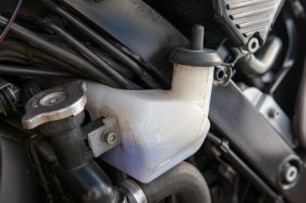
Is it good to ride your bike on reserve all the time
Fuel is one of the essential things needed for your bike to function efficiently. It generates power in your bike and makes it operable. You cannot risk being low on fuel or having no fuel in the tank. But there are times when you forget to fill up the fuel tank, and get stuck in an area with no petrol pumps around, or the fuel starts leaking, and you don't notice until the very end. What are you supposed to do then?
For such situations, bike manufacturing companies brought in the concept of reserve fuel. The reserve tank permits you to drive your bike till you find the nearest petrol pump and refill your tank. It is a fail-safe option in your main tank whenever you are stuck in a no-fuel situation.
However, this raises questions. Is it appropriate to ride your bike on reserve? What will happen to the bike's performance and efficiency? Let's address these.
1. No warning:
You can run your motorcycle on reserve all the time, but you might use up all the fuel without any warning signs that your tank is empty. This means that your bike can stop suddenly due to zero fuel, and you would have to push it to the nearest gas station.
2. Less power:
Driving on low fuel puts pressure on your bike's engine. As a result, the engine's power deteriorates over time and hampers your bike's performance significantly.
3. Practice occasionally:
The two reasons mentioned earlier are why you should not run your bike on reserve all the time. But it is advised that running your motorcycle on reserve from time to time is a good practice as it is essential to occasionally use the fuel in the lower part of the fuel tank. But, ensure that this is carried out periodically and doesn't become a habit.
4. Dirt collection:
In the previous point, we discussed that it is necessary to use the fuel in the lower part of your fuel tank. Why is it essential to do so? The lower part of your fuel tank is where a lot of dirt, dust, water, etc. is collected. And when you avoid riding your bike in reserve mode, all dirt and moisture can accumulate and fill up the reserve tank. This might end up clogging the main tank.
This accumulation can be challenging to deal with. It will involve a lot more tank maintenance, and frequent visits to the mechanic to get the tank cleaned, fixed, or even replaced, none of which is quick and easy to manage.
So, all in all, is it good to ride your bike on reserve all the time? It sure does not cause any severe harm as long as you are careful. Switching your motorcycle to the reserve mode means that the fuel will flow from the reserve tank instead of the main tank to the carburetor.
While riding in reserve is one of the many questions about motorcycles and their maintenance, other factors contribute to your bike's proper and efficient functioning. It is wise to insure your bike to protect it against any sudden problems with the parts or severe damages, which might involve a lot of repair expenses. Try investing in reliable motor insurance India and assure your bike a long life.
Click HERE to know more about motor insurance India.
Disclaimer: The information provided above is for illustrative purposes only. To get more details, please refer to policy wordings and prospectus before purchasing a policy.
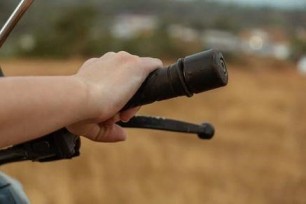
Know about these ten tips to deal with hand numbness while riding
Hand numbness affects all bikers, from beginners to professionals. A few hours into riding a bike, you may begin to feel tingling in your palms and fingers. The stinging sensation is caused by compressed nerves in the shoulder, elbow, or wrist and might last several hours.
You shake it off in the hopes of alleviating the dull ache, but it doesn't seem to work. So, what is the solution? Even if these techniques do not eliminate the condition, they can at least assist in easing or lessening the numbness while riding.
1. Wear protective gloves:
Vibration stresses the nerves and forces you to hold more tightly than usual. Wearing padded gloves might assist but make sure they're not too tight since this can complicate the issue.
2. Alter your arm position:
Keep changing your grip on the handlebar throughout the journey to prevent exerting the same persistent strain on your wrists.
3. Loosen up the elbows:
Relaxing your elbows engages your torso muscles, relieving strain from your hands. Let your elbows rest in all situations to allow you to soak vibrations from the road.
4. Maintain body balance:
Don't forget about your core. Maintaining your body's balance while riding may dramatically reduce the amount of pressure on your hands.
5. Tune-up your bike:
Ensure that the bike's suspension is correctly tuned and the tyre pressure is perfect before every ride. Decreasing the vibration is crucial to experience a smooth ride.
6. Get your bike altered to fit:
Bike fitting suggests moving the seat rearward, lowering it, adjusting the tilt, and elevating the bar. This will distribute your weight back and away from your hands.
7. Have a hold:
Consider adopting thicker, softer, and sticky grips so you don't have to grasp the handlebars as tightly. Another alternative is to use ergonomic grips. They're designed to assist you in positioning your hands correctly and relieving pressure spots.
8. Utilize your core:
Take note of your general position and the amount of involvement of your back and core muscles when riding. By focusing your conscious attention on your body's mechanics, you'll be able to make real-time modifications to ease the pressure on your arms and hands.
9. Physiotherapy:
If the numbness in your hands worsens or persists, you should seek medical advice from a physical therapist. They will determine the treatment by assessing the problem's root cause.
10. Stretching:
A few minutes of full body stretching before each trip will also reduce your muscles' numbness and strain. Basic stretching and strengthening exercises for your hands, wrists, and forearms will help prevent hand numbness.
It's common to exert strain on your arms and shoulders while biking. This usually happens unintentionally when you are in an unwanted environment, such as a traffic jam. Even if we take it easy and try to let go of the pressure, our hands and shoulders still tense up. As a result, discomfort and continuing difficulties in the muscles of the upper back result from this circumstance.
It's not just you who faces problems due to excessive riding, your bike also suffers through wear and tear and may eventually get damaged. Be prepared for this by looking up appropriate 2 wheeler insurance online that offers you the best-suited benefits for your needs and ensures the safety of your possession.
To get 2 wheeler insurance online, click HERE .
Disclaimer: The information provided above is for illustrative purposes only. To get more details, please refer to policy wordings and prospectus before purchasing a policy.


